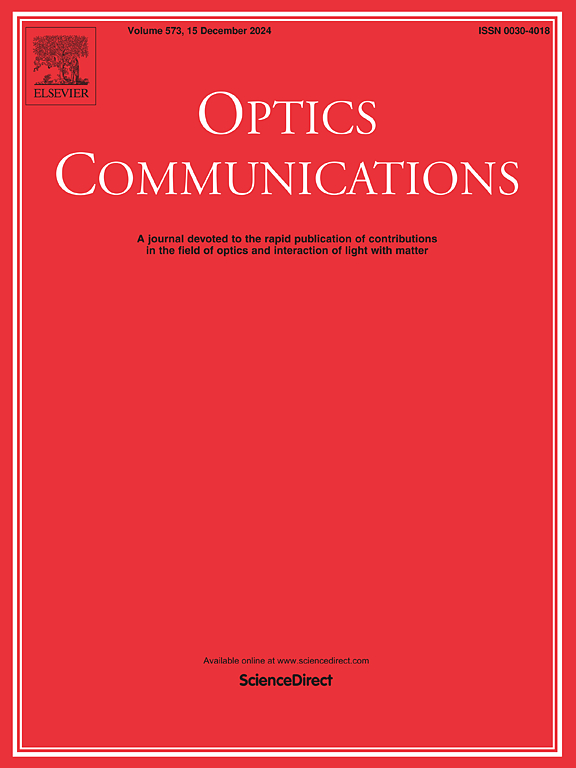On-chip terahertz amplitude modulator unit in series configuration design
IF 2.2
3区 物理与天体物理
Q2 OPTICS
引用次数: 0
Abstract
—Terahertz modulators play a pivotal role in the high-speed terahertz communication system. The development of a single modulation unit featuring simple structure and high modulation depth caters to the trend towards the miniaturization, integration, and multi-functionality of on-chip terahertz modulators. In this work, we propose a terahertz modulation unit in the form of a split-ring resonator integrated in series with microstrip lines for amplitude modulation. The modulator unit features an insertion loss of less than 1 dB under the On state, and a maximum modulation depth exceeding 30 dB under the Off state with an operational bandwidth greater than 15 GHz at 140 GHz. Subsequently, both the series-coupled and the dual-arm configuration of such a unit design for dual-band modulation were demonstrated. Series-coupled configuration featuring seamless connected units allows simultaneous modulation of terahertz carrier waves within multiple bands. Whilst dual-arm configuration consisting of a single split ring resonator unit having compact structure, but with challenges in multi-band modulation. Finally, we propose a characterization methodology of terahertz on-chip modulators involving a non-ideally conforming waveguide-finline-microstrip transition. Such conversion circumvents the challenges associated with conventional chip testing methods, and is highly practical in revealing the performance of stand-alone components. We believe that the proposed terahertz modulator unit design holds strong potential to provide compact and integrated solutions for analog signal processing in the upcoming Terahertz communications.
求助全文
约1分钟内获得全文
求助全文
来源期刊

Optics Communications
物理-光学
CiteScore
5.10
自引率
8.30%
发文量
681
审稿时长
38 days
期刊介绍:
Optics Communications invites original and timely contributions containing new results in various fields of optics and photonics. The journal considers theoretical and experimental research in areas ranging from the fundamental properties of light to technological applications. Topics covered include classical and quantum optics, optical physics and light-matter interactions, lasers, imaging, guided-wave optics and optical information processing. Manuscripts should offer clear evidence of novelty and significance. Papers concentrating on mathematical and computational issues, with limited connection to optics, are not suitable for publication in the Journal. Similarly, small technical advances, or papers concerned only with engineering applications or issues of materials science fall outside the journal scope.
 求助内容:
求助内容: 应助结果提醒方式:
应助结果提醒方式:


